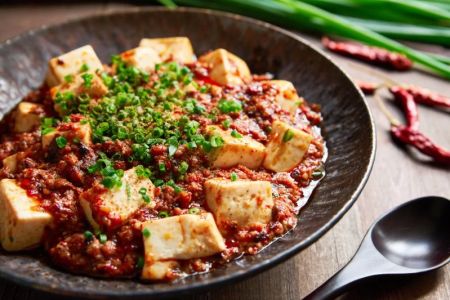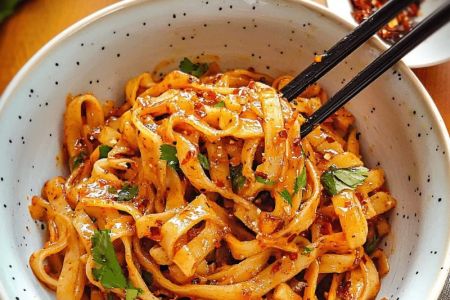Understanding the Chinese Restaurant Menu
When I first visited a Chinese restaurant, I remember feeling overwhelmed by the menu. It was packed with an array of choices, each dish sounding just as enticing as the last. What should I order? What are the most popular options? These questions raced through my mind, and I wasn’t sure where to begin. But after many visits, I’ve come to know exactly what to order at a Chinese restaurant, and I want to share that experience with you.
Chinese menus can be a bit tricky if you're not familiar with them. Most restaurants offer a broad selection, often divided into appetizers, mains, and sometimes, dim sum or regional specialties. The trick is knowing what to look for depending on your preferences and the type of meal you’re after. So, let's dive into some great tips for ordering at your next Chinese restaurant visit.
1. Start with the Classics: Appetizers and Dim Sum
Chinese appetizers and dim sum are the perfect way to begin any meal. One of my personal favorites is spring rolls—crispy and golden, they’re the ideal combination of crunch and flavor. But don’t stop there; Chinese restaurants also offer delicious dumplings. These come in various fillings, from pork and shrimp to vegetarian options. My recommendation is to go for steamed dumplings if you’re looking for something light and flavorful.
Another classic that never disappoints is the crispy fried wontons. The filling is typically a savory mix of crab, shrimp, and pork, encased in a golden, crispy shell. You can also try potstickers, which are pan-fried dumplings. These have a wonderfully crispy bottom, while the rest of the dumpling remains soft and juicy.
2. Sweet and Sour: A Bold Flavor Profile
For those who enjoy a contrast of sweet and tangy flavors, the sweet and sour chicken or pork is a must-try. It’s one of the most popular dishes ordered in Chinese restaurants around the world, and for a good reason. The combination of crispy meat and the tangy-sweet sauce is irresistible. If you want to try something new, opt for a different protein like shrimp or tofu, which are commonly used in this dish.
While sweet and sour dishes can be quite sugary, some restaurants will make the sauce from scratch, giving it a fresher, more balanced taste. Pair this dish with steamed rice, and you’ll have a perfect meal.
3. Wok-Tossed Stir-Fry Dishes
Stir-fry dishes are an essential part of Chinese cuisine, and they allow for a lot of versatility in terms of ingredients. If you're unsure about what to order, stir-fries are an excellent choice because they typically feature a protein, vegetables, and a savory sauce. One of the best-known stir-fried dishes is Kung Pao chicken, which combines tender chicken, peanuts, and chili peppers in a rich, tangy sauce.
Another stir-fry to consider is beef with broccoli. The beef is tender and flavorful, and the broccoli adds a nice crunch and slight bitterness that complements the savory sauce. For a more complex flavor, try the moo shu pork, which comes with scrambled eggs, mushrooms, and a hoisin-based sauce.
4. Comfort Food: Noodles and Rice
No Chinese meal feels complete without a good serving of noodles or rice. Whether you go for fried rice, lo mein, or chow mein, the choices are endless. If you're a fan of crispy textures, try ordering crispy chow mein. This dish is stir-fried until the noodles turn crunchy, and then it’s topped with a savory meat and vegetable sauce. It's a perfect combination of crunch and flavor.
If you’re in the mood for something more comforting, fried rice is a crowd-pleaser. You can’t go wrong with a classic shrimp fried rice or pork fried rice. It’s a filling and satisfying choice that pairs wonderfully with any main dish.
5. Don’t Forget the Sides and Sauces
Chinese cuisine is all about balance, and the sauces and sides help elevate any dish. I always make sure to add some extra sauce when ordering. Whether it's a savory soy-based sauce or the sweet hoisin, these additions can bring a whole new level of flavor to your meal.
Side dishes like hot and sour soup, egg drop soup, or even a simple bowl of steamed vegetables can also complement your meal. If you like a bit of spice, try ordering some chili oil or hot mustard on the side for an extra kick.
6. Explore Regional Chinese Dishes
For the adventurous eater, many Chinese restaurants also offer regional specialties. Sichuan cuisine, for example, is known for its bold, spicy flavors, so if you enjoy a bit of heat, look out for dishes like Mapo Tofu or Sichuan-style hot pots. These dishes feature a variety of ingredients cooked in spicy broths or sauces, perfect for those who love a fiery meal.
Cantonese cuisine, on the other hand, tends to be milder and focuses more on freshness. Dim sum, which is often associated with Cantonese cuisine, is a great introduction to this region’s food. Some restaurants also offer more specialized dishes like Peking duck, which is roasted to perfection and served with pancakes, hoisin sauce, and vegetables.
Conclusion: Customize Your Chinese Dining Experience
Chinese cuisine offers something for everyone. Whether you love bold, spicy flavors or mild and comforting dishes, there’s always something new to try. The key to a successful meal at a Chinese restaurant is knowing your preferences and ordering dishes that suit your taste. Don’t be afraid to ask your waiter for recommendations or customize your meal if you're looking for something specific.
By understanding the menu and exploring different options, you’ll be able to enjoy a delicious and satisfying meal every time you visit a Chinese restaurant. So the next time you’re wondering what to order, consider these dishes, and you're sure to have a fantastic dining experience.







